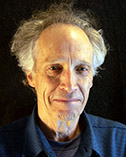
Robert S. Anderson
University of Colorado Boulder
|
Primary Section: 15, Geology Secondary Section: 16, Geophysics Membership Type:
Member
(elected 2021)
|
Biosketch
Bob Anderson is a geomorphologist, one who studies the surface of the planet and how it has evolved. Bob was born in Denver, and grew up among the mountains of Colorado. He graduated from Williams College with a degree in geology, followed by a Masters in geology from Stanford University. His Ph.D. from the University of Washington in 1986 focused on sediment transport by wind. Bob then worked for two years as a postdoctoral fellow at Caltech before joining the faculty at the University of California Santa Cruz. He moved to the University of Colorado Boulder in 2003 where he is both a professor in the Department of Geological Sciences and a fellow of the Institute of Arctic and Alpine Research. He was the inaugural editor of the American Geophysical Union’s journal JGR-Earth Surface. Bob is a fellow of both the American Geophysical Union and the Geological Society of America.
Research Interests
Bob Anderson has studied most aspects of the planet’s landscapes, from the weathering of rock to generate soil, to the transport of soil down hillslopes, to the carving of channels into bedrock by rivers, to the evolution of rocky coastlines that define the edge of the ocean. He has worked on both tectonically alive and tectonically dead landscapes. His recent focus has been on alpine and Arctic landscapes in which ice figures prominently, as glaciers in alpine settings, and as permafrost and sea ice in the Arctic. His focus is always on the processes involved, working on landscapes as physics and chemistry problems. His research may be broken into three tasks: field monitoring, establishment of timing in the landscape, and numerical modeling. In dating landscapes, Bob employs cosmogenic radionuclides in a variety of ways, dating both erosional and depositional surfaces, and constraining erosion rates at both points and on drainage basin scales. His modeling involves numerical simulations meant both to interpret data and to generate generic landscapes. These often result in animations that serve as outreach and teaching tools.

